Oregano Oil Benefits: 11 Science-Backed Uses & Side Effects
Learn the right ways to use oregano oil to make the most of its benefits.

Image: Shutterstock
The many benefits of oregano essential oil make it a necessary addition to your home. Originally from Europe, oregano (Origanum vulgare) is a common flavoring spice widely used in Italian and Mediterranean cuisines. Oregano oil is extracted from the leaves of the oregano plant and is known for its strong aroma. Beyond its role as a flavorful ingredient in cooking, this oil is also recognized for its potential health benefits. Many people use oregano essential oil for its antioxidant and anti-inflammatory properties.

Oregano oil has traditionally been used in natural remedies to treat digestive problems and colds. Antibacterial, antifungal, anti-inflammatory, antioxidant, and tumor-fighting properties are among the properties of this essential oil (1).
This oil has many health benefits. For example, food spoilage can also be prevented by its usage as a food preservative (2).
This article discusses the benefits of oregano essential oil, how to use it, and its side effects. Take a look to answer the question, what is oregano oil good for?
 Know Your Ingredient: Oregano Essential Oil
Know Your Ingredient: Oregano Essential OilWhat Is It?
Oil extracted from the leaves and shoots of the oregano plant.
What Are Its Benefits?
It has antibacterial, antifungal, anti-inflammatory, and antioxidant properties. It may aid wound healing, weight loss, and improve GI health.
Who Can Consume It?
Those looking for pain relief, fungal infection treatment, and skin and hair health improvement.
How Often?
One or more drops of diluted oil can be taken once in two days.
Caution
It has to be diluted before use. More than 600 mg per day may result in severe reactions.
In This Article
What Is Oregano Oil?
Oregano oil is extracted from the leaves and shoots of the oregano plant. They are first air dried, and the oil is extracted by steam distillation (3). This oil of oregano contains powerful antioxidants and antimicrobial compounds such as carvacroli A naturally occurring compound found in aromatic herbs like oregano, thyme, etc., which has antibacterial, anti-inflammatory, and antioxidant properties that can help with heart, gastrointestinal, and immune health. , thymol, rosmarinic acid, terpenes, terpenoids, and ursolic acid (4), (5).
Here are eleven potential benefits and uses of oregano oil.
Key Takeaways
- Oregano essential oil is extracted from the leaves and roots of the oregano plant. It is known for its antibacterial and antioxidant properties.
- The bioactive compounds in oregano oil may help fight harmful bacteria, treat fungal infections, improve gut health, and lower cholesterol levels.
- It is also used as a cleaning agent and as a natural antibiotic to treat athlete’s foot.
- If not diluted properly with carrier oils, like coconut or olive, this herbal medicine may cause burns on the skin.
What Are The Health Benefits Of Oregano Oil?
1. May Help Fight Harmful Bacteria
Oregano oil is a natural antibiotic known to be effective against several bacteria (6). It may help protect respiratory health and fight bacteria that cause infections of the skin and the urinary.
The carvacrol in the oil can exhibit antibacterial properties by inhibiting the growth of bacteria (7). More studies are needed to understand its use for this purpose.
Along with carvacrol, the thymol in oregano oil was found to have a synergistic effect in inhibiting bacterial growth (8), (9).
The essential oil from a different species of oregano, namely Origanum heracleoticum L., was found to be effective against clinical Strains of Escherichia Coli and Pseudomonas Aeruginosa (10).
The graph suggests that at 0.5%, oregano oil reduced E. coli O157:H7 on romaine lettuce and spinach by more than 2 and 3 logs on day 0 with no survivors found on day 1. Oregano oil and carvacrol also killed all E. coli O157:H7 concentrations at 0 min. Thus, oregano oil, due to its antibacterial properties, could be used to decontaminate and protect produce during storage.

Antimicrobial Activity Of Oregano Oil
Source: Antimicrobial Effects of Plant Compounds against Virulent Escherichia coli O157:H7 Strains Containing Shiga Toxin Genes in Laboratory Media and on Romaine Lettuce and SpinachThe oil had also shown inhibitory action against Staphylococcus aureus bacteria that often causes food poisoning (11).
The natural potent antibacterial properties of oregano oil have the potential to be used against antibiotic-resistant bacterial strains (12).
2. May Help Lower Cholesterol
Studies have shown that oregano oil may help lower cholesterol in animals as well as humans. Animal studies have found that carvacrol may help in significantly improving lipid profiles in mice fed with a high-fat diet for ten weeks. These mice had lower cholesterol levels than the mice fed with only a high-fat diet (13).
A study on people with mild hyperlipidemia (high cholesterol levels) demonstrated that consuming a different species of oregano oil (Origanum onites) could help manage their lipid profiles (14). Over a duration of three months, the subjects had lower levels of bad cholesterol (LDL or low density lipoprotein) and increased levels of good cholesterol (HDL or high density lipoprotein). These effects were observed in the subjects after they had made changes to their diet and lifestyle as well.
The oil had also reduced levels of C-reactive protein that is known to increase the risk of cardiovascular disease (14).
3. May Have Powerful Antioxidant Properties
Antioxidants bind to free radicals that are harmful toxins in our body. They help prevent cellular damage and oxidative stressi An imbalance in the body's antioxidants and free radicals that causes inflammation, cell damage, and a higher chance of developing chronic illnesses like diabetes, cancer, and neurological diseases. that may otherwise lead to chronic disorders like cancer or heart disease (15). Studies have shown that oregano has a high concentration of antioxidants (16), (17).
Carvacrol, thymol, and rosmarinic acid are all powerful antioxidants in oregano oil (18), (19), (20). They help in improving the immunity of the body and keeping diseases at bay.
4. Could Help Treat Fungal Infections
Oregano essential oil has fungicidal activity that has been used to treat oral candidiasisi Also known as oral thrush, a fungal infection that causes white lesions in the lining of the mouth. and denture stomatitisi An infection caused by a yeast called candida, which can lead to redness and swelling beneath the dentures. (21). A study has found that adding essential oils such as oregano oil to a foot bath can be effective against several fungal and bacterial strains (22).
In vitro studies have established the antifungal activities of oregano oil against candida yeast infections (23).
Another study found the antifungal activity of thymol against Candida albicans, Candida tropicalis, and Candida krusei strains when used in combination with nystatin (an antifungal medication) (24).
5. May Improve Gut Health
Oregano oil has been used in folk medicine to treat digestive disorders (25).
The antimicrobial and anti-inflammatory effects of oregano essential oil (OEO) help in preserving gut health. OEO was found to have a protective effect on the intestinal walls of pigs. The oil helped treat leaky gut by improving the intestinal barrier and killing the harmful microorganisms (26).
Carvacrol’s anti-inflammatory properties help in healing gastric ulcers. The compound may offer benefit by interfering with inflammatory mediators like prostanoids (27).
Studies have found that oregano may treat bacterial infections of the small intestine. This effect could be attributed to the oil’s strong antioxidant and antimicrobial properties (28), (29), (30). Flatulence or excess gas is a symptom of small intestinal bacterial infections (SIBO), and oregano oil helps in ameliorating them at least as effectively as Rifaximin (an antibiotic) (28).
Oregano oil may also help relieve tiredness caused by enteric parasites. It achieves this by inhibiting the activity of the gut parasites, namely Blastocystis hominis, Entamoeba hartmanni, and Endolimax nana (31).
6. May Have Anti-Inflammatory Properties
Oregano oil has anti-inflammatory properties (32). It helps in protecting the body against several disorders, including cardiovascular disease, cancer, neurodegenerative disordersi A range of disorders that arise due to continued damage to the nervous system and cells, leading to difficulty in cognition and mobility. , and drug toxicity (1), (15) (22).
Animal studies suggest that carvacrol reduces the production of inflammatory mediators (interleukins) that are known to cause inflammation (33).
Another study demonstrated that a combination of oregano oil and thyme oil reduced inflammation in mice (34).
Chronic obstructive pulmonary disease (COPD) is an epidemic disease that is primarily caused due to cigarette smoking. The carvacrol on oregano oil was found to help treat systemic inflammation in pigs with COPD (35).
7. May Help Relieve Pain
Oregano oil is a natural analgesic (3.0.CO;2-W”>36). Traditionally it was used to relieve pain from rheumatoid arthritisi A chronic autoimmune disease that causes the body's immune system to attack its own tissues, thereby resulting in joint inflammation. through topical application (37). Carvacrol also inhibits prostaglandin-synthesis and prevents the associated inflammation and pain (37).
The carvacrol in oregano oil was effective in reducing orofacial paini Discomfort or pain in the jaw, mouth, or face that is frequently brought on by dental problems, nerve abnormalities, muscular dysfunction, or temporomandibular disorders (TMD). (38). The oil could also relieve the related symptoms like chronic pain in the head, face, neck, and mouth (39).
8. May Have Cancer-Fighting Properties
Oregano essential oil has antioxidant, anti-inflammatory, and chemopreventive properties that may help in fighting cancer (32), (40).
Another study discovered that oregano essential oil could exhibit anti-proliferative activity in stomach cancer (41).
Extracts from oregano were found to cause cancer cell death in human colon cancer (42).
Several studies show that carvacrol may have cancer-fighting properties. The compound was also found to have anti-tumor effects on human breast cancer cells (43).
Carvacrol was also found to reduce the risk of liver cancer (44).
Another study found that carvacrol is a very potent inhibitor of cell growth in human lung cancer (45).
Research also states that oregano oil and its main constituents can be potentially used as anticancer agents (46).
9. May Help You Lose Weight
The anti-inflammatory and hypolipidemic effects of oregano essential oil may help in reducing the risk of obesity.
Animal studies found that carvacrol could prevent diet-induced obesity by modulating gene expressions in mice fed with a high-fat diet (47).
Another study found that the levels of C-reactive protein were significantly low in mice fed with a high-fat diet and carvacrol (14). C-reactive protein is usually higher in children and adolescents with excess weight (48). Hence, the reduction of the C-reactive protein is an indication of lowered inflammation and risk of obesity (49). This also decreases the risk of other disorders linked to obesity, including cardiovascular disease and diabetes (50).
Carvacrol was also found to help in weight management. In mice studies, those on a diet with carvacrol gained less weight than those fed a high-fat diet alone (13).
The thymol in oregano oil may also reduce the risk of obesity (51).
10. May Help In Healing wounds
Oregano essential oil has been used traditionally to help heal wounds. A novel wound-healing ointment was developed with the oil as one of its components (52).
Another oregano extract ointment was found to prevent bacterial contamination on wounds (especially post-surgical wounds) (53).
According to a rat study, carvacrol was found to improve wound healing by regulating pro-inflammatory molecules (54).
 Fun Fact
Fun Fact11. May Help Reduce Side Effects From Medications/Drugs
Several drugs and medications may have adverse effects. One such drug is Methotrexate, which is used to treat inflammatory diseases like rheumatoid arthritis and cancer. The anti-inflammatory and antioxidant properties of oregano essential oil were found to help against methotrexate-induced intestinal damage in rats (55).
Another study suggests that carvacrol is useful during oral iron therapy (56). Iron supplements may cause digestive discomfort with symptoms like constipation and vomiting. Carvacrol could help protect the intestinal epithelial cells during Salmonella infection (56).
Oregano oil may also be used in aromatherapyi A holistic healing approach using plant-based essential oils, usually by applying topically or inhaling, to support mental, emotional, and physical health. for stress relief. In addition to benefiting one’s health, the oregano essential oil could also have advantages for one’s skin and hair. Take a look at how oregano oil benefits your skin and hair.
Oregano Oil For Skin And Hair
Oregano essential oil is gaining traction in the beauty industry due to its powerful anti-inflammatory and antioxidant properties, particularly from its active compound carvacrol (57).
Collagen is an important structural component of the skin. It also prevents premature aging (58). Carvacrol promotes collagen synthesis by activating the genes involved in collagen production (58). The antioxidants present in oregano essential oil may also help in preventing cellular damage.
The antifungal properties of the oil may help treat dandruff and boost scalp health. However, research is limited in this regard.
You can avail all these wholesome oregano benefits through a simple oregano oil recipe. Check out the steps below.
Oregano Oil Recipe
What You Need
- ½ cup of dried oregano leaves
- ½ cup of extra virgin oil
- 1-2 cups of water
How To Prepare It
- Add oregano into a glass jar and pour the oil on top of it.
- Stir to combine the ingredients.
- Seal the jar with the lid.
- Boil water in a pot.
- Place the jar in the boiling water and turn off the burner.
- Let it sit in it for 10 minutes.
- Remove the jar from the water and shake it well.
- Store the jar in a cool, dry place for 2 weeks.
- Shake the jar at least once a day.
- Strain the oil from the oregano leaves after 2 weeks into a clean airtight glass jar.
Tip: Boost the benefits of your homemade oregano oil by mixing in other herbs that work well with oregano, enhancing its antioxidant and antimicrobial properties.
Now, let’s learn how to use it!
How To Use Oregano Oil?
The essential oil should be diluted with a carrier oil like jojoba or coconut oil before applying topically. The capsule form of oregano oil has different concentrations. Select high-quality, therapeutic-grade capsules and talk to your healthcare provider about the right dosage for you. Generally, taking 1 to 2 capsules a day is common, but your needs may differ based on your health.
Uses
For Treating Skin Infections
You will need
- Oregano essential oil
- Olive oil
Process
- You can use one drop of oregano essential oil in one teaspoon of olive oil and apply this mixture to the affected area. This diluted oil helps reduce skin irritation and soothes the skin.
For Treating Athlete’s footYou will need
- Oregano essential oil
- Hot water bath
- Sea salt
Process
You can use a few drops of oregano essential oil in the foot bath with two tablespoons of sea salt and soak your feet for 20 minutes.
As A Natural Antibiotic
You will need a capsule prescribed by a medical professional to treat infections by bacteria or parasites.
As A Cleaning Agent
You will need
- Oregano essential oil
- Tea tree oil
- Baking powder
- Vinegar
Process
You can mix all the ingredients in hot water and use the mixture as an all-natural cleaner.
Note: Always do a patch test before using oregano oil on your skin. Just apply a small amount of diluted oil to a less visible area and see if there is any reaction. This quick step can help avoid skin irritation or allergic reactions.
 Fun Fact
Fun FactA blogger shared her experience using oregano oil to manage Morgellons disease, an imaginary condition that makes you feel as if something is crawling on your skin. She writes, “The swelling, red, itchy, inflamed skin was gone, and the doctor asked how I got it to look so good. I told him I put oregano oil and coconut oil on my skin (i).”
So, this is how the oil of oregano benefits your health, hair, and skin. Though it has important benefits and uses, it may not be suitable for all. The oil could cause some side effects one must be aware of.
Side Effects Of Oregano Oil
There can be serious side effects of oregano oil for certain people and when not used with precaution. Oregano oil is very potent and can burn if not properly diluted. It also has a pungent taste; hence, you can mix it with olive or coconut oils. Perform a patch test before using it on your skin.
Since oregano oil may interfere with certain drugs, consult a doctor before using it. If you experience any side effects, immediately seek medical attention.
People with diabetes should monitor their intake of the oil as it may lower blood sugar levels (59).
People who are taking medication are cautioned from taking oregano oil.
It is generally not considered safe for pregnant women unless otherwise prescribed by a licensed practitioner (60).
Conclusion
Oregano oil has been used traditionally as a herbal medicine for the many health benefits it provides.
It fights bacterial and fungal infections and is suggested to have the potential to combat multidrug resistant bacteria (61).
It helps in reducing cancer risk, lowering cholesterol, and weight loss.
Apart from culinary uses, the oil is also used in aromatherapy. You can make the oil a part of your regular routine and add it to your food. However, be wary of the potential side effects it may cause.
People Also Ask
- Can I use oregano oil on my face?
- Yes, but dilute it with coconut or jojoba oil. It will help in improving skin health.
- Does oregano oil help treat sinus infections?
- Oregano oil has strong antibacterial compounds that may help treat sinus infections. Use it in a diffuser to clear blocked nasal passages.
- How do you use oregano oil for hair growth?
- Mix it with coconut or argan oils for promoting hair growth. However, there is no research stating that oregano oil may boost hair growth.
Frequently Asked Questions
Is oregano oil safe for children?
Oregano oil can be safe for children in small amounts, but it is important to consult a healthcare provider first. They can recommend appropriate dosages based on the child’s age and health needs. Always use diluted forms and monitor for any adverse reactions.
How long can I use oregano oil?
Oregano oil can typically be used for several weeks, but it is best to take breaks to avoid potential side effects. Consult with a healthcare provider for guidance on long-term use and to discuss any specific health concerns.
Is oregano oil the strongest antibiotic?
Yes. Oregano oil has been considered the most potent natural antibiotic since ancient times. It was used in traditional medicine to treat gastrointestinal issues, diabetes, respiratory infections, and inflammatory diseases (63).
How much oregano oil to take as an antibiotic?
There is no standard recommended dosage for oregano essential oil as an antibiotic. Research on its effectiveness and dosing is limited. However, using 1 to 2 drops of the oil in a diluted form is recommended to avoid its side effects.
Which is better: oregano oil or capsules?
Both forms have their advantages. Liquid oregano oil is available in a more concentrated and potent form than capsules. However, people who dislike the taste of oregano in the oil form may opt for capsules.
Can I take oregano oil before bed?
No. The stimulating effects of oregano oil may elevate dopamine and serotonin levels and possibly interfere with sleep (64), (65).
Can you drink oregano oil with water?
Yes. You can drink oregano oil diluted with water. However, dilute it properly as its strong flavor may otherwise cause irritation.
Illustration: Benefits Of Oregano Oil | How To Use It & Side Effects
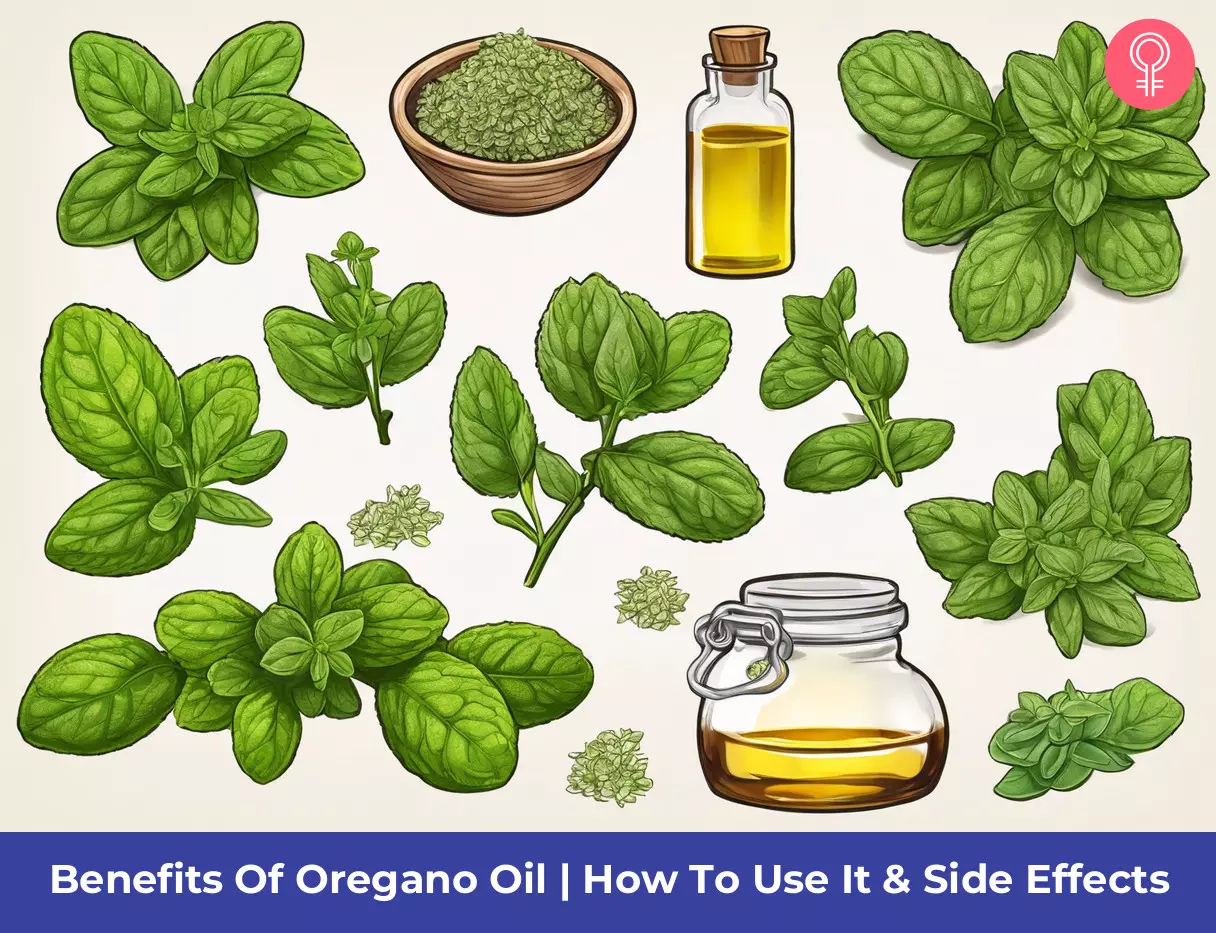
Image: Stable Diffusion/StyleCraze Design Team
References
Articles on StyleCraze are backed by verified information from peer-reviewed and academic research papers, reputed organizations, research institutions, and medical associations to ensure accuracy and relevance. Read our editorial policy to learn more.
- Leyva-López, Nayely, et al. “Essential oils of oregano: Biological activity beyond their antimicrobial properties.” Molecules 22.6 (2017): 989.
https://www.ncbi.nlm.nih.gov/pmc/articles/PMC6152729/ - Rodriguez-Garcia, I., et al. “Oregano essential oil as an antimicrobial and antioxidant additive in food products.” Critical reviews in food science and nutrition 56.10 (2016): 1717-1727.
https://pubmed.ncbi.nlm.nih.gov/25763467/ - Kula, Józef, et al. “Chemical composition of Origanum vulgare L. essential oil from Bulgaria.” Journal of Essential Oil Bearing Plants 10.3 (2007): 215-220.
www.tandfonline.com/doi/abs/10.1080/0972060X.2007.10643545 - Rao, Gottumukkala Venkateswara, et al. “Chemical constituents and biological studies of Origanum vulgare Linn.” Pharmacognosy research 3.2 (2011): 143.
https://pubmed.ncbi.nlm.nih.gov/21772760/ - Inoue, Yoshihiro, et al. “The antibacterial effects of terpene alcohols on Staphylococcus aureus and their mode of action.” FEMS microbiology letters 237.2 (2004): 325-331.
https://www.sciencedirect.com/science/article/abs/pii/S0378109704004811 - Saeed, Sabahat, and Perween Tariq. “Antibacterial activity of oregano (Origanum vulgare Linn.) against gram positive bacteria.” Pakistan journal of pharmaceutical sciences 22.4 (2009).
https://pubmed.ncbi.nlm.nih.gov/19783523/ - Nostro, Antonia, and Teresa Papalia. “Antimicrobial activity of carvacrol: current progress and future prospectives.” Recent patents on anti-infective drug discovery 7.1 (2012): 28-35.
https://pubmed.ncbi.nlm.nih.gov/22044355/ - Lambert, R. J. W., et al. “A study of the minimum inhibitory concentration and mode of action of oregano essential oil, thymol and carvacrol.” Journal of applied microbiology 91.3 (2001): 453-462.
https://pubmed.ncbi.nlm.nih.gov/11556910/ - Nostro, Antonia, et al. “Effects of oregano, carvacrol and thymol on Staphylococcus aureus and Staphylococcus epidermidis biofilms.” Journal of medical microbiology 56.4 (2007): 519-523.
https://pubmed.ncbi.nlm.nih.gov/17374894/ - Sienkiewicz, Monika, M. Wasiela, and A. Głowacka. “The antibacterial activity of oregano essential oil (Origanum heracleoticum L.) against clinical strains of Escherichia coli and Pseudomonas aeruginosa.” Medycyna doswiadczalna i mikrobiologia 64.4 (2012): 297-307.
https://pubmed.ncbi.nlm.nih.gov/23484421/ - Preuss, Harry G., et al. “Effects of essential oils and monolaurin on Staphylococcus aureus: in vitro and in vivo studies.” Toxicology Mechanisms and Methods 15.4 (2005): 279-285.
https://pubmed.ncbi.nlm.nih.gov/20021093/ - Teixeira, Barbara, et al. “Chemical composition and bioactivity of different oregano (Origanum vulgare) extracts and essential oil.” Journal of the Science of Food and Agriculture 93.11 (2013): 2707-2714.
https://pubmed.ncbi.nlm.nih.gov/23553824/ - Kim, Eunkyung, et al. “Carvacrol protects against hepatic steatosis in mice fed a high-fat diet by enhancing SIRT1-AMPK signaling.” Evidence-Based Complementary and Alternative Medicine 2013 (2013).
https://pubmed.ncbi.nlm.nih.gov/23533470/ - Özdemir, B., et al. “Effects of Origanum onites on endothelial function and serum biochemical markers in hyperlipidaemic patients.” Journal of International Medical Research 36.6 (2008): 1326-1334.
https://pubmed.ncbi.nlm.nih.gov/19094443/ - Coccimiglio, John, et al. “Antioxidant, antibacterial, and cytotoxic activities of the ethanolic Origanum vulgare extract and its major constituents.” Oxidative medicine and cellular longevity 2016 (2016).
https://www.ncbi.nlm.nih.gov/pmc/articles/PMC4804097/ - Zheng, Wei, and Shiow Y. Wang. “Antioxidant activity and phenolic compounds in selected herbs.” Journal of Agricultural and Food chemistry 49.11 (2001): 5165-5170.
https://pubmed.ncbi.nlm.nih.gov/11714298/ - Zhang, Xiao-Li, et al. “Phenolic compounds from Origanum vulgare and their antioxidant and antiviral activities.” Food chemistry 152 (2014): 300-306.
https://www.sciencedirect.com/science/article/pii/S0308814613018438 - Khaki, Mohammad Reza Afarineshe, et al. “Antinociceptive effect of aqueous extract of origanum vulgare l. in male rats: possible involvement of the GABAergic system.” Iranian journal of pharmaceutical research: IJPR 12.2 (2013): 407.
https://www.ncbi.nlm.nih.gov/pmc/articles/PMC3813232/ - Lagouri, Vasiliki, et al. “Composition and antioxidant activity of essential oils from oregano plants grown wild in Greece.” Zeitschrift für Lebensmittel-Untersuchung und Forschung 197.1 (1993): 20-23.
https://link.springer.com/article/10.1007/BF01202694 - Bakota, Erica L., et al. “Antioxidant activity and sensory evaluation of a rosmarinic acid‐enriched extract of Salvia officinalis.” Journal of food science 80.4 (2015): C711-C717.
https://pubmed.ncbi.nlm.nih.gov/25808312/ - Marcos-Arias, Cristina, et al. “In vitro activities of natural products against oral Candida isolates from denture wearers.” BMC complementary and alternative medicine 11.1 (2011): 119.
https://pubmed.ncbi.nlm.nih.gov/22118215/ - Inouye, Shigeharu, et al. “Combined effect of heat, essential oils and salt on the fungicidal activity against Trichophyton mentagrophytes in foot bath.” Nippon Ishinkin Gakkai Zasshi 48.1 (2007): 27-36.
https://pubmed.ncbi.nlm.nih.gov/17287720/ - Pozzatti, Patricia, et al. “In vitro activity of essential oils extracted from plants used as spices against fluconazole-resistant and fluconazole-susceptible Candida spp.” Canadian journal of microbiology 54.11 (2008): 950-956.
https://pubmed.ncbi.nlm.nih.gov/18997851/ - de Castro, Ricardo Dias, et al. “Antifungal activity and mode of action of thymol and its synergism with nystatin against Candida species involved with infections in the oral cavity: an in vitro study.” BMC complementary and alternative medicine 15.1 (2015): 1-7.
https://bmccomplementmedtherapies.biomedcentral.com/articles/10.1186/s12906-015-0947-2 - Gong, H. Y., et al. “Analysis of essential oils of Origanum vulgare from six production areas of China and Pakistan.” Revista Brasileira de Farmacognosia 24.1 (2014): 25-32.
https://www.sciencedirect.com/science/article/pii/S0102695X14701292#bib0100 - Zou, Yi, et al. “Oregano essential oil improves intestinal morphology and expression of tight junction proteins associated with modulation of selected intestinal bacteria and immune status in a pig model.” BioMed research international 2016 (2016).
https://www.ncbi.nlm.nih.gov/pmc/articles/PMC4903144/ - Silva, Francilene V., et al. “Anti-inflammatory and anti-ulcer activities of carvacrol, a monoterpene present in the essential oil of oregano.” Journal of medicinal food 15.11 (2012): 984-991.
https://pubmed.ncbi.nlm.nih.gov/22892022/ - Chedid, Victor et al. “Herbal therapy is equivalent to rifaximin for the treatment of small intestinal bacterial overgrowth.” Global advances in health and medicine vol. 3,3 (2014): 16-24.
https://www.ncbi.nlm.nih.gov/pmc/articles/PMC4030608/ - “Antioxidant and Antimicrobial Activities of Essential Oils Obtained from Oregano (Origanum Vulgare Ssp. Hirtum) by Using Different Extraction Methods | Journal of Medicinal Food.” Mary Ann Liebert, Inc., Publishers, 2011,
https://www.liebertpub.com/action/oidcStart?redirectUri=%2Fdoi%2Fabs%2F10.1089%2Fjmf.2010.0098 - Arcila-Lozano, Cynthia Cristina et al. “El orégano: propiedades, composición y actividad biológica de sus componentes” [Oregano: properties, composition and biological activity]. Archivos latinoamericanos de nutricion vol. 54,1 (2004): 100-11.
https://pubmed.ncbi.nlm.nih.gov/15332363/ - Force, M et al. “Inhibition of enteric parasites by emulsified oil of oregano in vivo.” Phytotherapy research : PTR vol. 14,3 (2000): 213-4.
https://pubmed.ncbi.nlm.nih.gov/10815019/ - Grondona, Ezequiel et al. “Bio-efficacy of the essential oil of oregano (Origanum vulgare Lamiaceae. Ssp. Hirtum).” Plant foods for human nutrition (Dordrecht, Netherlands) vol. 69,4 (2014): 351-7.
https://pubmed.ncbi.nlm.nih.gov/25266989/ - Lima, Milena da Silva et al. “Anti-inflammatory effects of carvacrol: evidence for a key role of interleukin-10.” European journal of pharmacology vol. 699,1-3 (2013): 112-7.
https://pubmed.ncbi.nlm.nih.gov/23220159/ - Bukovská, Alexandra et al. “Effects of a combination of thyme and oregano essential oils on TNBS-induced colitis in mice.” Mediators of inflammation vol. 2007 (2007): 23296.
https://www.ncbi.nlm.nih.gov/pmc/articles/PMC2233768/ - Mahtaj, Leila Gholami, et al. “The Effect of Carvacrol on Systemic Inflammation in Guinea Pigs Model of COPD Induced by Cigarette Smoke Exposure.” Pharmacological Reports, vol. 67, no. 1.
https://www.sciencedirect.com/science/article/abs/pii/S1734114014002783 - Aydın, Süleyman, et al. “Investigation OfOriganum Onites, Sideritis Congesta AndSatureja Cuneifolia Essential Oils for Analgesic Activity.” Phytotherapy Research, vol. 10.
https://onlinelibrary.wiley.com/doi/abs/10.1002/%28SICI%291099-1573%28199606%2910%3A4%3C342%3A%3AAID-PTR832%3E3.0.CO%3B2-W - Kırımer, Neşe & Baser, K. Husnu Can & Tümen, Gülendam. (1995). Carvacrol-rich plants in Turkey. Chemistry of Natural Compounds. 31. 37-41.
https://www.researchgate.net/publication/227279704_Carvacrol-rich_plants_in_Turkey - Guimarães, Adriana G et al. “Orofacial analgesic-like activity of carvacrol in rodents.” Zeitschrift fur Naturforschung. C, Journal of biosciences vol. 67,9-10 (2012): 481-5.
https://pubmed.ncbi.nlm.nih.gov/23198406/ - Silva, Juliane C., et al. “Enhancement of Orofacial Antinociceptive Effect of Carvacrol, a Monoterpene Present in Oregano and Thyme Oils, by β-Cyclodextrin Inclusion Complex in Mice.” Biomedicine & Pharmacotherapy, vol. 84.
https://www.sciencedirect.com/science/article/abs/pii/S0753332216311076 - Bostancıoğlu, Rakibe Beklem, et al. “Assessment of Anti-Angiogenic and Anti-Tumoral Potentials of Origanum Onites L. Essential Oil.” Food and Chemical Toxicology, vol. 50.
https://www.sciencedirect.com/science/article/pii/S027869151200258X - Balusamy, Sri Renukadevi, et al. “Anti-Proliferative Activity of Origanum Vulgare Inhibited Lipogenesis and Induced Mitochondrial Mediated Apoptosis in Human Stomach Cancer Cell Lines.” Biomedicine & Pharmacotherapy, vol. 108.
https://www.sciencedirect.com/science/article/pii/S0753332218354933 - Isabella Savini, Rosaria Arnone, Maria Valeria Catani & Luciana Avigliano (2009) Origanum Vulgare Induces Apoptosis in Human Colon Cancer Caco2 Cells, Nutrition and Cancer, 61:3, 381-389.
https://www.tandfonline.com/doi/abs/10.1080/01635580802582769 - Arunasree, K M. “Anti-proliferative effects of carvacrol on a human metastatic breast cancer cell line, MDA-MB 231.” Phytomedicine : international journal of phytotherapy and phytopharmacology vol. 17,8-9 (2010): 581-8.
https://pubmed.ncbi.nlm.nih.gov/20096548/ - Yin, Qing-Hua et al. “Anti-proliferative and pro-apoptotic effect of carvacrol on human hepatocellular carcinoma cell line HepG-2.” Cytotechnology vol. 64,1 (2012): 43-51.
https://www.ncbi.nlm.nih.gov/pmc/articles/PMC3261448/ - Koparal, A Tansu, and Melih Zeytinoglu. “Effects of Carvacrol on a Human Non-Small Cell Lung Cancer (NSCLC) Cell Line, A549.” Cytotechnology vol. 43,1-3 (2003): 149-54.
https://www.ncbi.nlm.nih.gov/pmc/articles/PMC3449592/ - Elshafie, Hazem S et al. “Cytotoxic Activity of Origanum Vulgare L. on Hepatocellular Carcinoma cell Line HepG2 and Evaluation of its Biological Activity.” Molecules (Basel, Switzerland) vol. 22,9 1435. 30 Aug. 2017.
https://pubmed.ncbi.nlm.nih.gov/28867805/ - Cho, Soomin et al. “Carvacrol prevents diet-induced obesity by modulating gene expressions involved in adipogenesis and inflammation in mice fed with high-fat diet.” The Journal of nutritional biochemistry vol. 23,2 (2012): 192-201.
https://pubmed.ncbi.nlm.nih.gov/21447440/ - Kitsios, Konstantinos et al. “High-sensitivity C-reactive protein levels and metabolic disorders in obese and overweight children and adolescents.” Journal of clinical research in pediatric endocrinology vol. 5,1 (2013): 44-9.
https://www.ncbi.nlm.nih.gov/pmc/articles/PMC3628392/ - Santos, A-C et al. “Central obesity as a major determinant of increased high-sensitivity C-reactive protein in metabolic syndrome.” International journal of obesity (2005) vol. 29,12 (2005): 1452-6.
https://pubmed.ncbi.nlm.nih.gov/16077717/. - den Engelsen, Corine et al. “High-sensitivity C-reactive protein to detect metabolic syndrome in a centrally obese population: a cross-sectional analysis.” Cardiovascular diabetology vol. 11 25. 14 Mar. 2012.
https://pubmed.ncbi.nlm.nih.gov/22417460/ - Choi, J.H., Kim, S.W., Yu, R. et al. Monoterpene phenolic compound thymol promotes browning of 3T3-L1 adipocytes. Eur J Nutr 56, 2329–2341 (2017).
https://link.springer.com/article/10.1007/s00394-016-1273-2 - Süntar, Ipek, et al. “A Novel Wound Healing Ointment: A Formulation of Hypericum Perforatum Oil and Sage and Oregano Essential Oils Based on Traditional Turkish Knowledge.” Journal of Ethnopharmacology, vol. 134.
https://www.sciencedirect.com/science/article/abs/pii/S0378874110008469 - Ragi, Jennifer et al. “Oregano extract ointment for wound healing: a randomized, double-blind, petrolatum-controlled study evaluating efficacy.” Journal of drugs in dermatology : JDD vol. 10,10 (2011): 1168-72.
https://pubmed.ncbi.nlm.nih.gov/21968667/ - Gunal, Mehmet & Heper, Aylin & Zaloglu, Nezahat. (2014). The Effects of Topical Carvacrol Application on Wound Healing Process in Male Rats. Pharmacognosy Journal. 6. 10-13. 10.5530/pj.2014.3.2.
https://www.researchgate.net/publication/272694110 - Türkcü, Gül et al. “Protective effects of carvacrol and pomegranate against methotrexate-induced intestinal damage in rats.” International journal of clinical and experimental medicine vol. 8,9 15474-81. 15 Sep. 2015
https://www.ncbi.nlm.nih.gov/pmc/articles/PMC4658926/ - Kortman, Guus A M et al. “Iron-induced virulence of Salmonella enterica serovar typhimurium at the intestinal epithelial interface can be suppressed by carvacrol.” Antimicrobial agents and chemotherapy vol. 58,3 (2014): 1664-70.
https://www.ncbi.nlm.nih.gov/pmc/articles/PMC3957860/ - Han, Xuesheng, and Tory L Parker. “Anti-inflammatory, tissue remodeling, immunomodulatory, and anticancer activities of oregano (Origanum vulgare) essential oil in a human skin disease model.” Biochimie open vol. 4 73-77. 3 Mar. 2017.
https://pubmed.ncbi.nlm.nih.gov/29450144/ - Lee, Jongsung, et al. “Mechanisms of Carvacrol-Induced Expression of Type I Collagen Gene.” Journal of Dermatological Science, vol. 52.
https://www.sciencedirect.com/science/article/abs/pii/S0923181108002004 - “Rosemary and Oregano Contain Diabetes-Fighting Compounds – American Chemical Society.” American Chemical Society, 2014
https://www.acs.org/pressroom/presspacs/2014/acs-presspac-july-23-2014/rosemary-and-oregano-contain-diabetes-fighting-compounds.html - Hollenbach, Clarissa Boemler, et al. “Pre-and postnatal evaluation of offspring rats exposed to Origanum vulgare essential oil during mating, gestation and lactation.” Ciência Rural 47.1 (2017).
https://www.scielo.br/j/cr/a/GVNDMnVHK7BtY7N4cCY37qP/?lang=en - Lu, Min et al. “Bactericidal Property of Oregano Oil Against Multidrug-Resistant Clinical Isolates.” Frontiers in microbiology vol. 9 2329. 5 Oct. 2018.
https://pubmed.ncbi.nlm.nih.gov/30344513/ - Anti-Influenza Virus Activities of Commercial Oregano oils and their Carriers
https://www.researchgate.net/publication/233807904_Anti-Influenza_Virus_Activities_of_Commercial_Oregano_oils_and_their_Carriers - Improvement of the Antimicrobial Activity of Oregano Oil by Encapsulation in Chitosan—Alginate Nanoparticles
https://www.mdpi.com/1420-3049/26/22/7017 - Carvacrol: from ancient flavoring to neuromodulatory agent
https://pubmed.ncbi.nlm.nih.gov/23708230/ - The roles of dopamine and serotonin, and of their receptors, in regulating sleep and waking
https://pubmed.ncbi.nlm.nih.gov/18772053/
Read full bio of Dr. Zeel Gandhi
- Nilofar Pendhari is a Certified Clinical Nutritionist with 9 years of experience in dietetics. She specializes in weight loss and management and charts out effective diet plans to help her clients meet their fitness and weight loss goals.
 Nilofar Pendhari is a Certified Clinical Nutritionist with 9 years of experience in dietetics. She specializes in weight loss and management and charts out effective diet plans to help her clients meet their fitness and weight loss goals.
Nilofar Pendhari is a Certified Clinical Nutritionist with 9 years of experience in dietetics. She specializes in weight loss and management and charts out effective diet plans to help her clients meet their fitness and weight loss goals.
Read full bio of Ravi Teja Tadimalla
Read full bio of Arshiya Syeda
Read full bio of Aparna Mallampalli







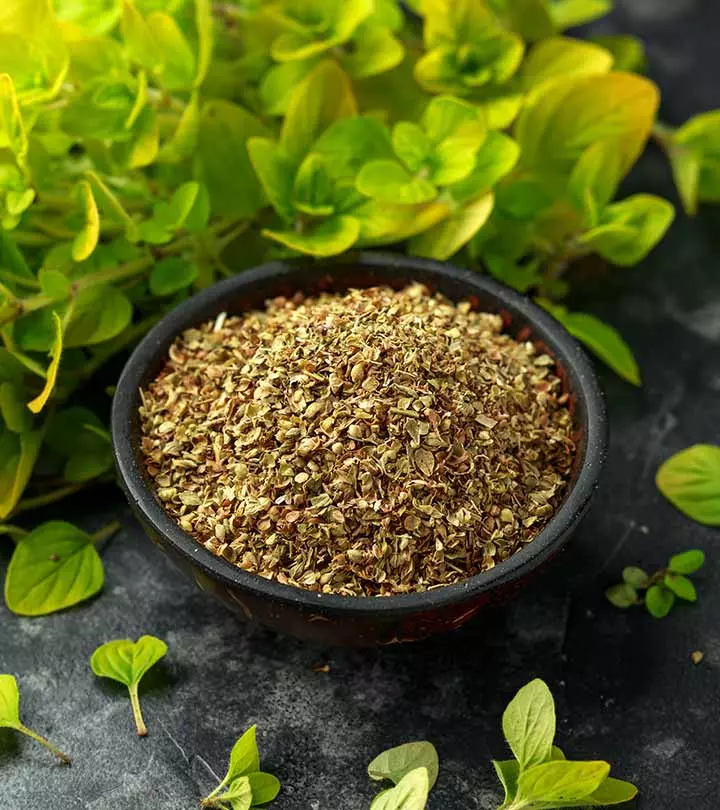
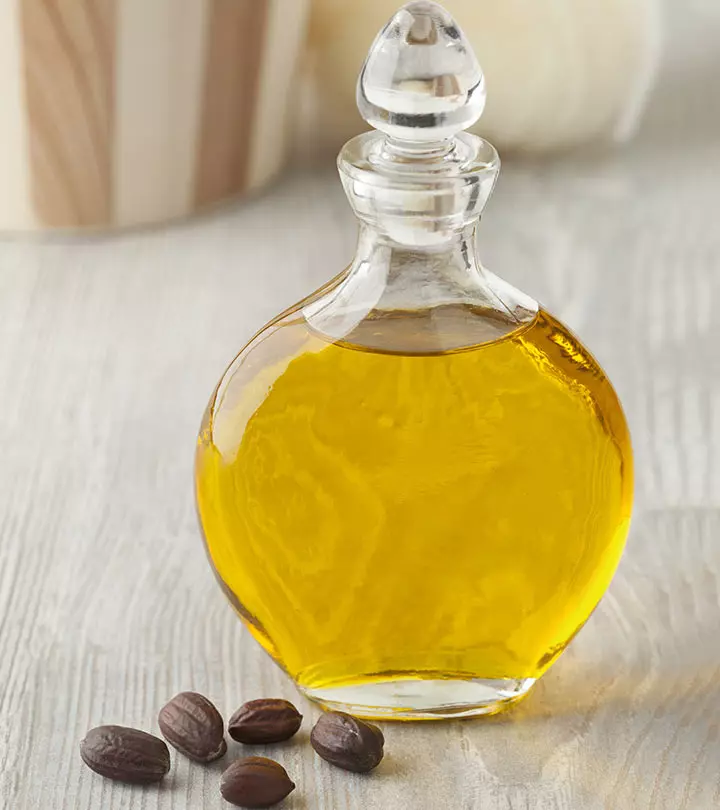


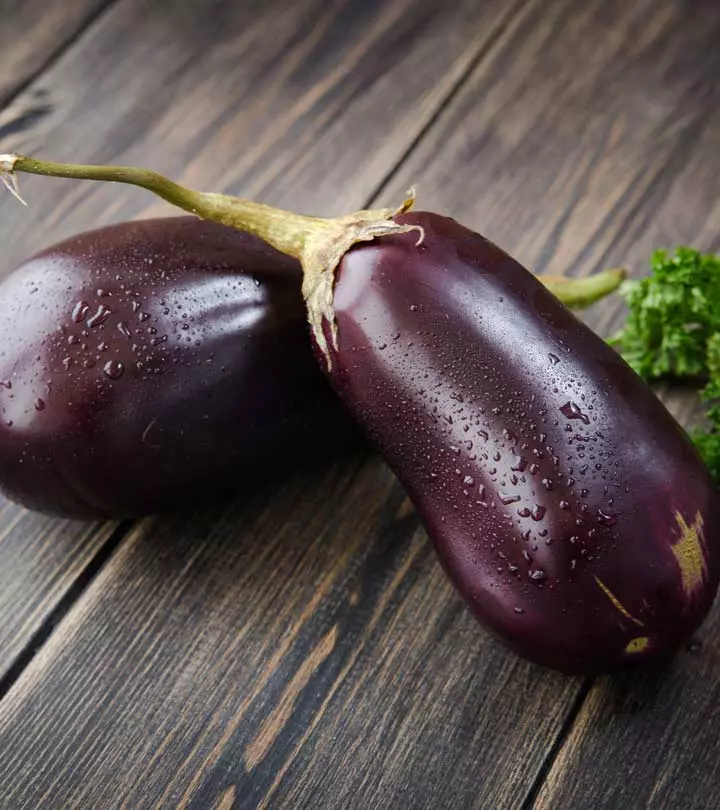
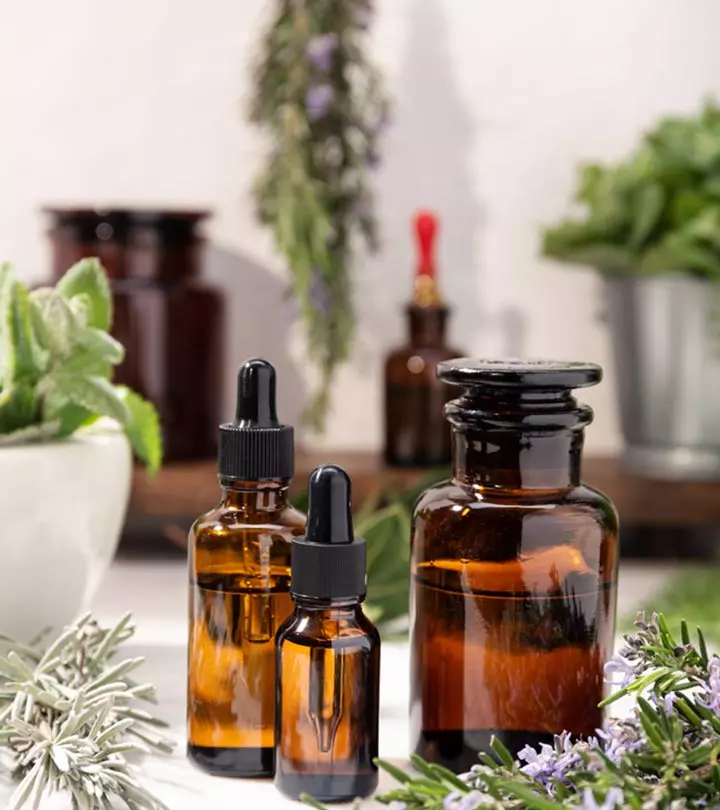
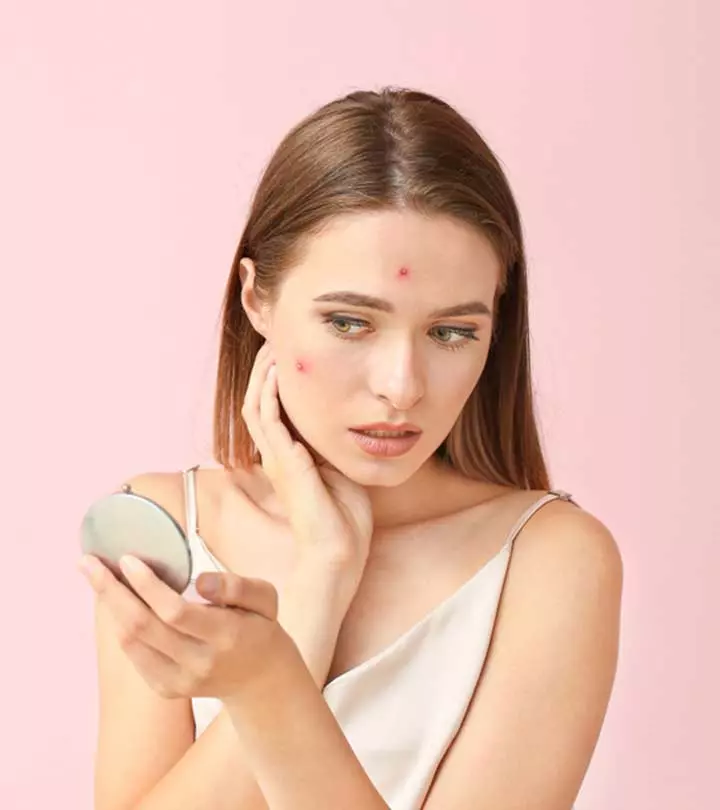
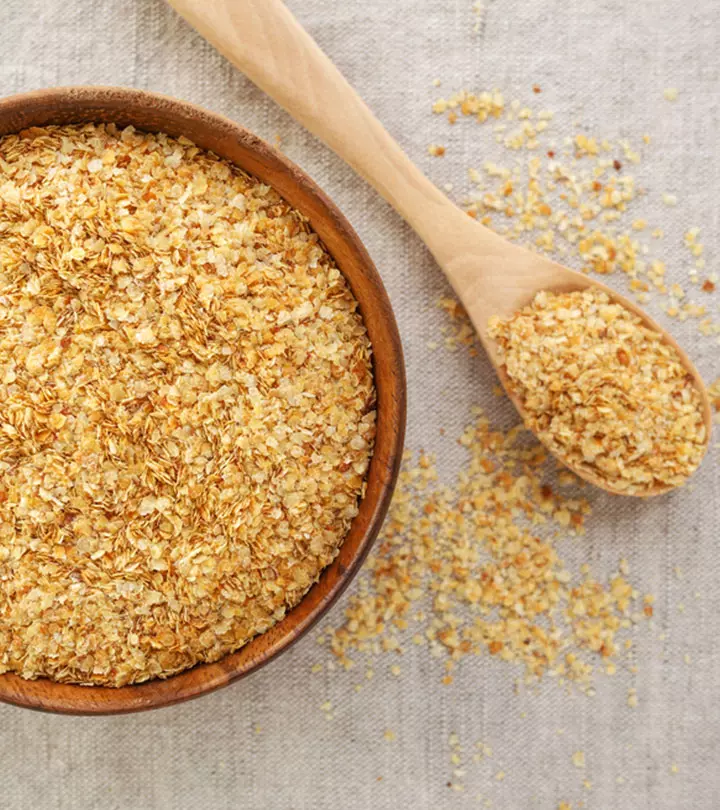
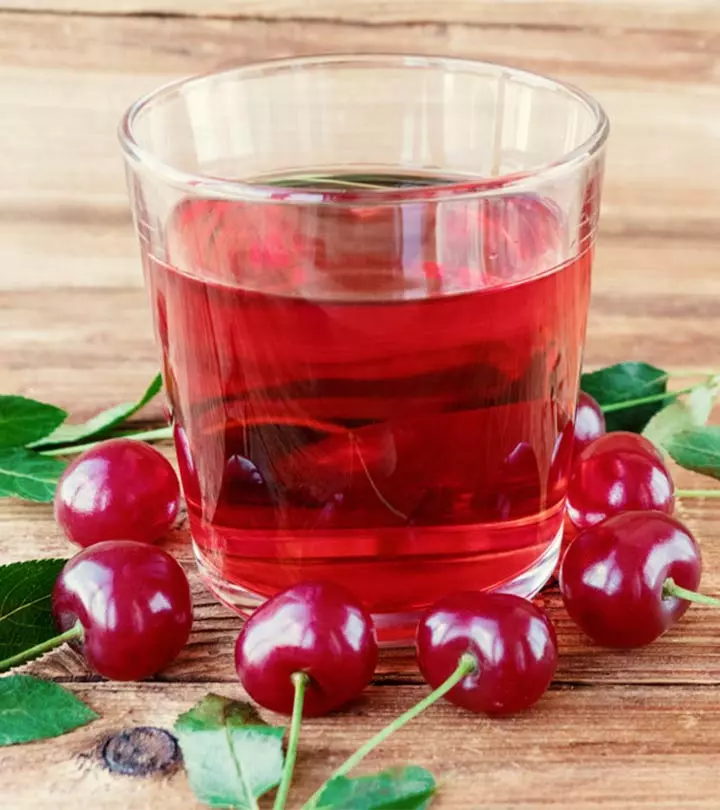
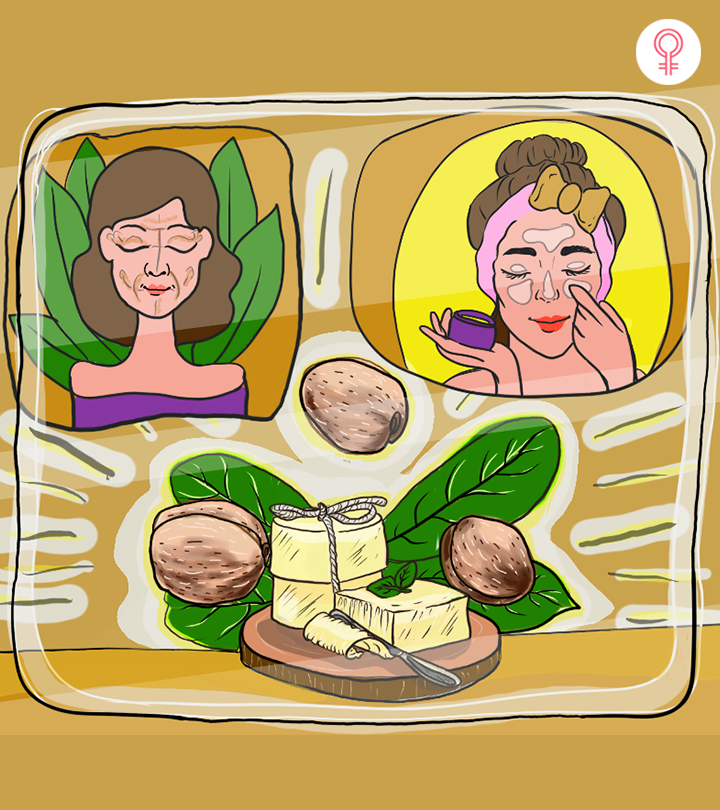
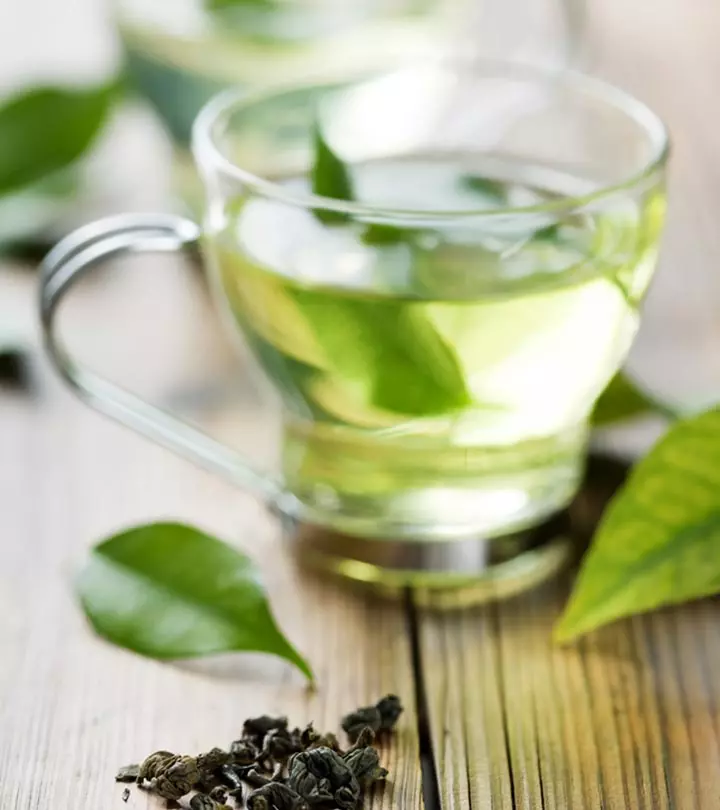
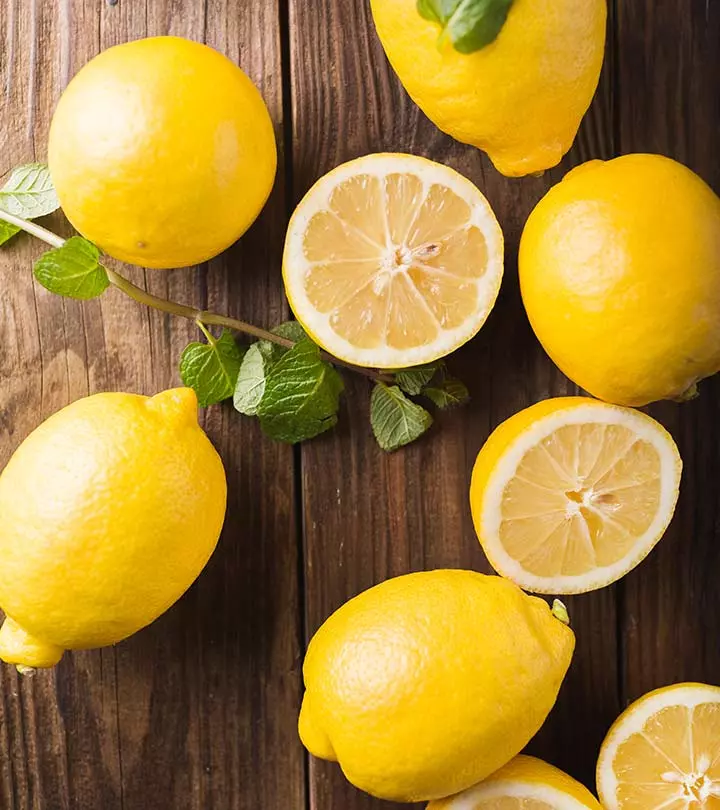
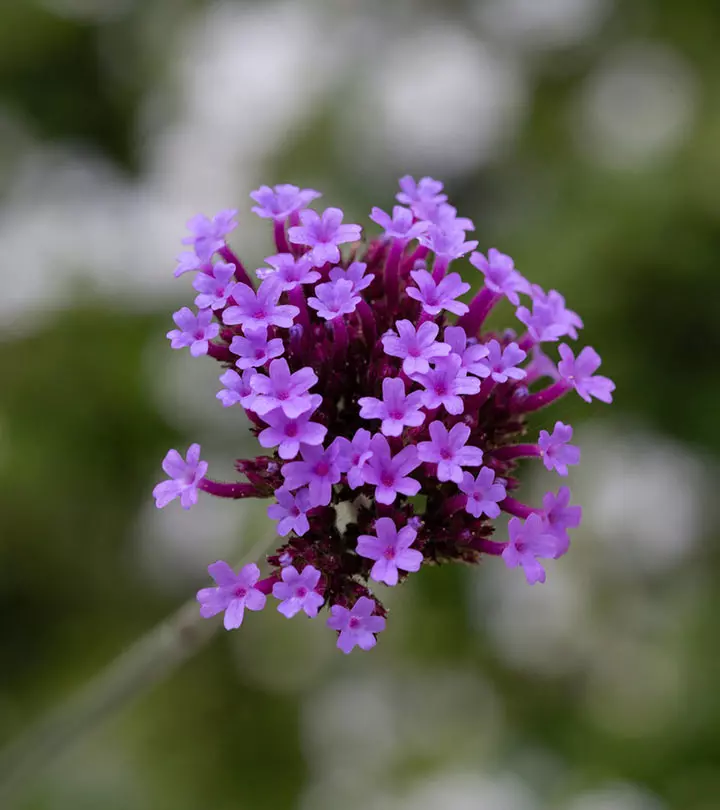
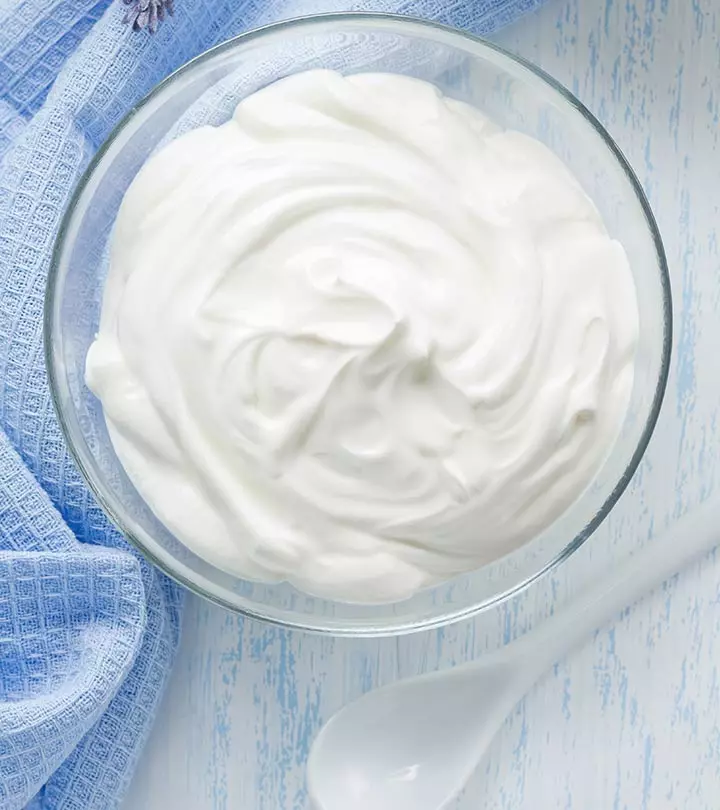
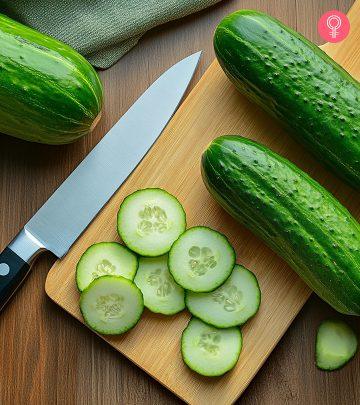
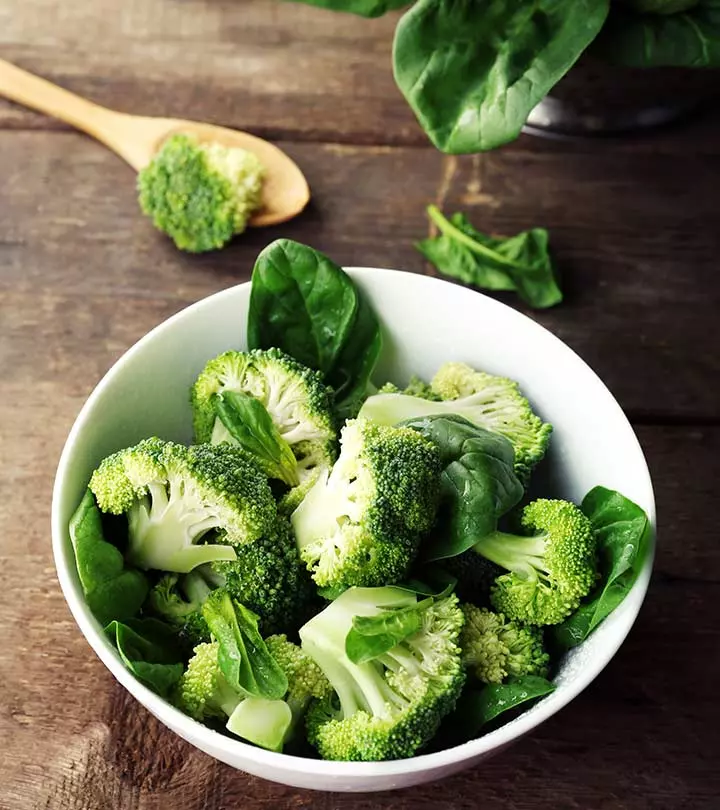
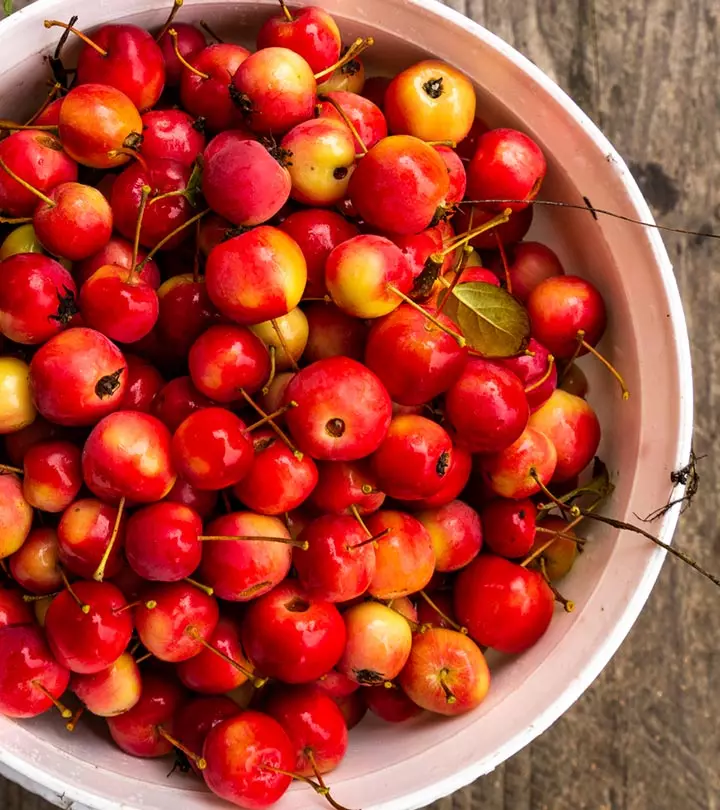
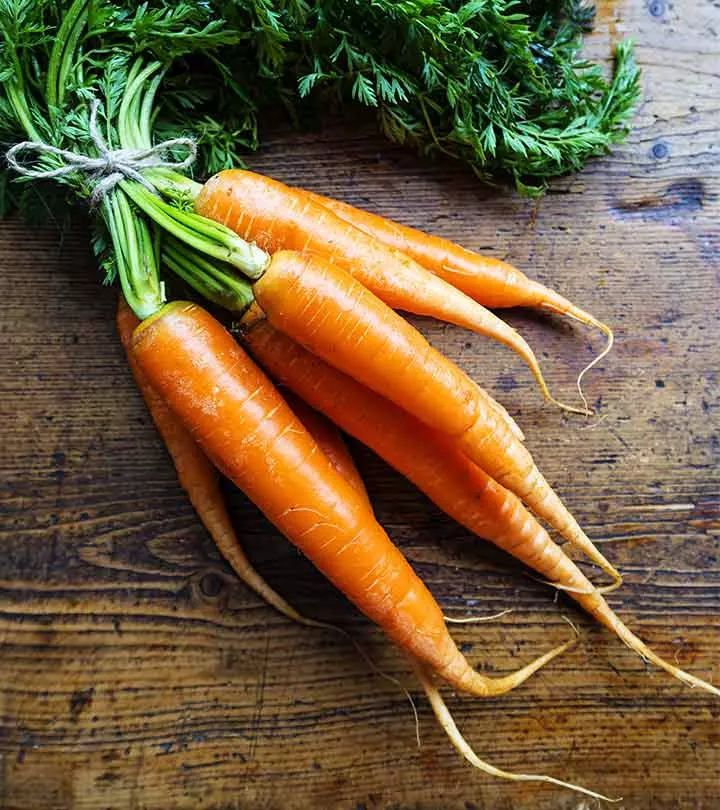

Community Experiences
Join the conversation and become a part of our empowering community! Share your stories, experiences, and insights to connect with other beauty, lifestyle, and health enthusiasts.